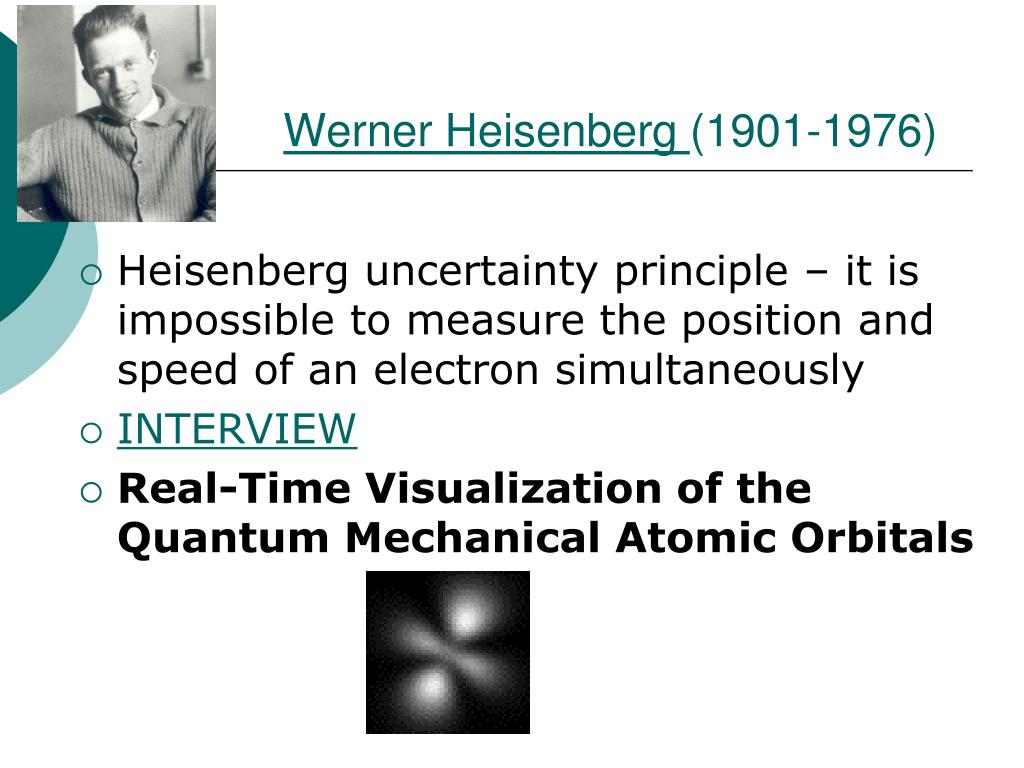
Can you figure out what this condition may be? If so, suggest your answer in response to this article, and I will let you know if you are correct. In order for such a thing to occur, the created particles must abide by some condition.

Such particles are created for a short period of time from a vacuum and then disappear. The conceptual core of this chapter is Heisenberg’s discovery of quantum mechanics, considered as arising from certain fundamental principles of quantum physics and as established by giving these principles a mathematical expression. And he saw nonlocality as early as 1905, presenting it formally in 1927, but was ignored. For example, the solutions of the Schrödinger Equation in a hydrogen atom are the electron orbitals around the nucleus and the energy levels of each electron in such an orbital.Īn interesting topic that the video only addresses briefly is the existence of virtual particles. He saw indeterminism ten years before the uncertainty principle. (To the more advanced readers, I will note that this is an equation of eigenvalues of a matrix, or an operator called a Hamiltonian).

In addition, the solution of the equation gives us the energy of the system in each of these conditions. The solution to the Schrödinger Equation gives us a system of stable wave functions, meaning that if we use it on a system, the system will remain in this state until an external intervention changes its stability. The Schrödinger Equation depicts the entire quantum system, from the hydrogen atom, through the rest of the chemical elements and molecules including electrons within metals, electrons in semiconductors, superconductors and much more. The second topic is the Schrödinger Equation, whose importance cannot be overestimated. We can only know the wave function, meaning the probability of the particle to be in one place or another, but nothing more. In my opinion, the proper way to view this situation is that we do not know the location of the particle in between measurements. The approach viewing particles as if they blink in and out of “existence” between different measuring points, is an approach I disagree with. However, a key fact to remember is that the position of the particle depended on the wave function prior to when the measurement took place. As we now know the position of the particle for certain, its wave function shifts and determines that it is indeed where we determined it is. When we take a measurement, a process called “wave function collapse” occurs. In other words, it is the probability itself that presents a wavelike behaviour. I think it is important to understand equivalences in physics in general, but this one I have never grasped. The wave function describes the probability of finding the position of a particle in space or in a certain velocity at a defined amount of time. In quantum mechanics, the two pictures of Schroedinger and Heisenberg are taken as equivalent, where in the former wavefunctions are time variants and operators are not, and in the latter it is the other way around. First, regarding the meaning of wave functionality, or what is the wavelike description of particles.

This video regards several topics I would like to expand upon and possibly offer a slightly different point of view. The video was produced by cassiopeia projects.


 0 kommentar(er)
0 kommentar(er)
